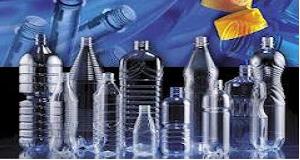Different techniques are used for placing the
monolayer or coextruded plastic parison
into 3D positions such as:
#articulate the extruder nozzle,
# articulate the mold platen,
# robotically orient the parison, and suction
blow mould.
Sequential blow mould can be used to
integrate hard and soft regions of different plastics on a
single tubular structure (parison). This
diagram shows two
extruders controlling the sequence coextrusion
of operation. It can use rigid–
soft–rigid, soft–rigid–soft, and so on
plastic combinations via accumulators ‘‘1’’ and
‘‘2.’’
In the
meantime a certain number of different systems became
established in the market: suction blow
mould, 3D blow mould with parison manipulation, and a split
mold, horizontal machine with vertically
opening mold and a six-axis-robot laying the
parison into the cavity or a machine without
using a closing unit. All these systems
can be combined with six- or seven-layer
coextrusion or with sequential coextrusion
running hard–soft–hard plastics one after the
other.
If strongly bent, 3D curved products, such as
filler pipes for automobiles, are
produced with traditional technology. Flash
areas near the mold parting line
cannot be avoided and result in high flash
percentages and surrounding pinch lines. In
extreme cases the amount of flash can reach
several times the actual article weight.
The very long pinch lines lead to extremely
high clamping forces.
With 3D, substantial savings are possible
that may be achieved by using BM
machines specifically designed for the
production without (or at least with significantly
reduced) pinch line. In these processes the
extruded parison (with a diameter
smaller than the article diameter) is deformed
and manipulated and then moved
directly into the mold cavity so that the
remaining pinch line length is reduced
to a minimum. The 3D manipulation of the
parison with programmable manipulators
or six-axis-robots and special devices allows
the pinchless production of complex
articles. These advantages require a higher
effort as to the machine technology,
depending on the article quality required and
therefore also to type of process applied.


No comments:
Post a Comment